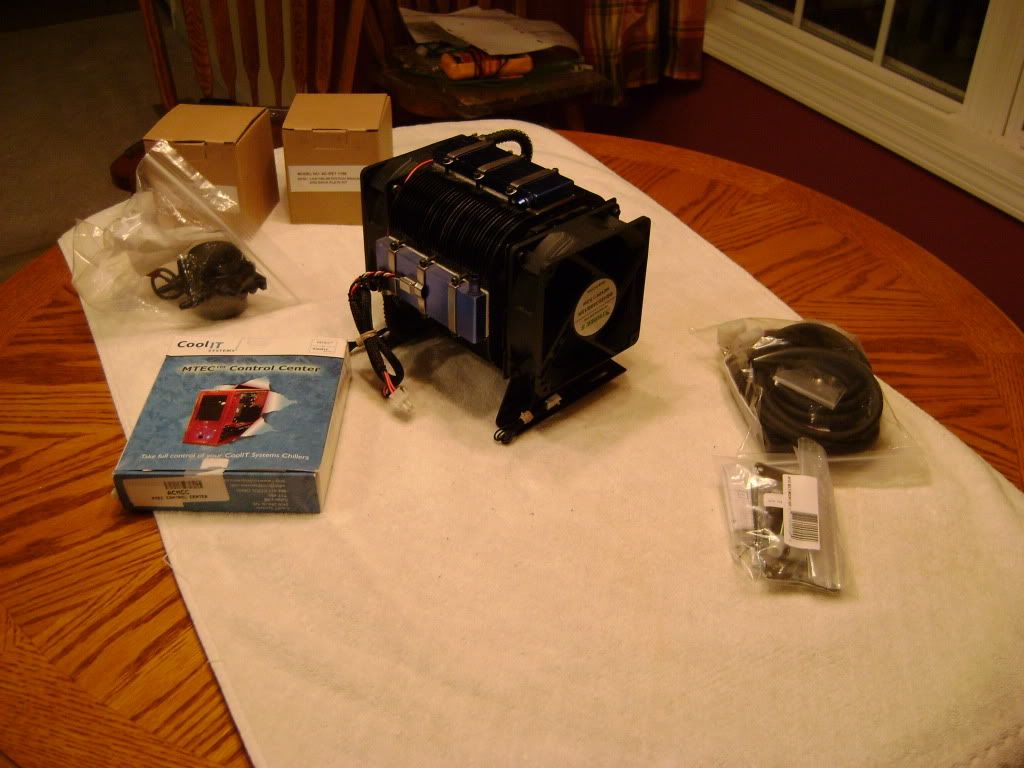So I've done a little research on the peltier stuff, still am researching it, and would like to get a little insight. I'm building a small SLI system specs:
sx58h7 mobo
i7 920 c0
6gb ddr3
2x 480gtx
3x ocz vertex or 1x 160gb intel x25m
I want to use peltiers for the GPU's and the CPU. ~320w for the GPUs and a ~220 for the CPU. Does that sound about right? Or do I have things backwards here? i7 920 = 130w TDP, GTX480 = 250w TDP... Overkill? Totally wrong way to calculate? Polite suggestions are very welcome.
If I'm running it that way, what sort of PSU should I get? I'm planning to run the system with an Antec SG-850, possibly adding a meanwell PSU if needed. Or, might I use my 1200w Thermaltake instead? I'm trying to avoid using the Thermaltake as it's a bit big. I'm also thinking about trading it in for a 1000w unit that is smaller, would that work? How about a 65A 12v rail PCP&C 750w silencer running on it's own just for the peltiers with the antec 850 (I can stack the two, but the length of most 1000+ units are just too long?
Cooling will be sufficient I think. I have 2x 240 radiators, and will be adding a 480 or 2x 360 rads. That's enough I hope? The mobo and video cards will have plenty of insulation. FC waterblock + peltier = bad?
Writing this stuff down just gave me a bunch more ideas... but that can wait for later. Let me know what you guys think.
sx58h7 mobo
i7 920 c0
6gb ddr3
2x 480gtx
3x ocz vertex or 1x 160gb intel x25m
I want to use peltiers for the GPU's and the CPU. ~320w for the GPUs and a ~220 for the CPU. Does that sound about right? Or do I have things backwards here? i7 920 = 130w TDP, GTX480 = 250w TDP... Overkill? Totally wrong way to calculate? Polite suggestions are very welcome.
If I'm running it that way, what sort of PSU should I get? I'm planning to run the system with an Antec SG-850, possibly adding a meanwell PSU if needed. Or, might I use my 1200w Thermaltake instead? I'm trying to avoid using the Thermaltake as it's a bit big. I'm also thinking about trading it in for a 1000w unit that is smaller, would that work? How about a 65A 12v rail PCP&C 750w silencer running on it's own just for the peltiers with the antec 850 (I can stack the two, but the length of most 1000+ units are just too long?
Cooling will be sufficient I think. I have 2x 240 radiators, and will be adding a 480 or 2x 360 rads. That's enough I hope? The mobo and video cards will have plenty of insulation. FC waterblock + peltier = bad?
Writing this stuff down just gave me a bunch more ideas... but that can wait for later. Let me know what you guys think.
![[H]ard|Forum](/styles/hardforum/xenforo/logo_dark.png)


